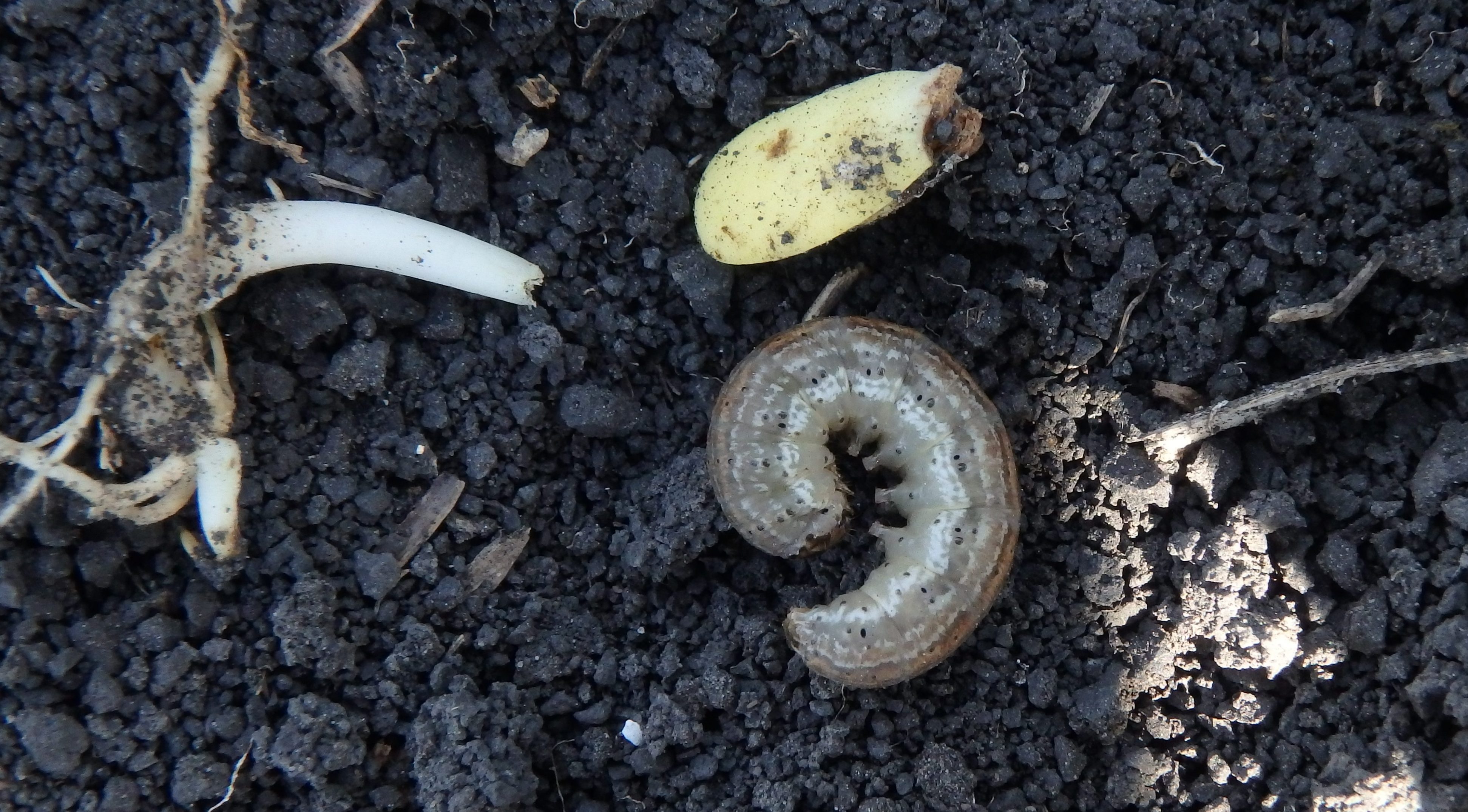Scouting Tips
- Inspect fields on a weekly basis from mid-May to mid-June. Depending on the species, cutworms may take up to 65 to 87 days to complete all larval stages. However, damage may not be inflicted during this entire period.
- Look for areas with missing plants and wilted, notched, gouged or shot-holed plant tissue. Individual cutworms tend to feed within the seed row, leaving a gap when the affected plants are clipped off or die.
- Dig around in suspect areas with a trowel or a shovel. Sift soil or scoop soil into a container and shake loose any potential larvae. Cutworms may be found anywhere from just below the soil surface to four inches deep. They move deeper into the soil during the heat of the day, so it may be necessary to dig deeper or revisit the field under cooler conditions.
- Identify the species and size of cutworms. Dingy, redbacked and darksided cutworms are most common in Manitoba. For more information on cutworm species identification, refer to the additional resources below. Since management decisions are based largely on the size of cutworms and how long they will continue to feed, it is important to note that different species will be present at varying development stages at a given time. While some cutworm species stop feeding as they get larger, others will feed more as they get to the larger stages.
Note: If larvae cannot be detected, assumptions of cutworm feeding may be made based on symptoms pictured below. Assess the percentage of plants damaged by cutworms to help determine if control is necessary.
Management
The goal is to protect crops from cutworm damage until larvae have finished feeding or until the crop is advanced enough to withstand damage and continue growing.
Research-based, economic thresholds are not currently available for pulse and soybean crops. However, nominal thresholds have been developed based on field experience.
Soybeans, Dry Beans: 1 or more cutworms (<2.5 cm in length) per metre of row, or 20% of plants cut
Field Peas, Faba Beans: 2-3 cutworms (<2.5 cm long) per square metre
Field peas and faba beans are more resilient to cutworm feeding compared to soybeans and dry beans. This is because they can regrow or branch out from subsurface nodes if damaged above or below-ground. If crops are damaged early in their development, be sure to assess regrowth before terminating the crop or reseeding.
One option for cutworm prevention is to allow volunteer growth to reach 3-5 cm (1.2-2 inches), then cultivate and seed 10-14 days later. This will starve young cutworm larvae before crop seedlings are present. Cutworms also have several natural enemies to take note of, including ground beetles, bee flies, tachinid flies, parasitic wasps and fungal diseases.
ADDITIONAL RESOURCES
Cutworms in Field Crops – Manitoba Agriculture
Cutworm Pests of Crops on the Canadian Prairies – Agriculture and Agri-Food Canada
Field Crop and Forage Pests and their Natural Enemies in Western Canada – Agriculture and Agri-Food Canada




